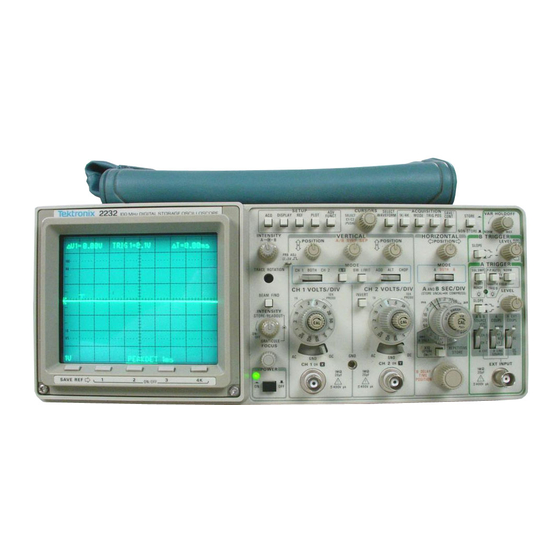
Tektronix 2232 Manuals
Manuals and User Guides for Tektronix 2232. We have 6 Tektronix 2232 manuals available for free PDF download: Service Manual, User Manual
Tektronix 2232 Service Manual (366 pages)
Digital Storage Oscilloscope
Brand: Tektronix
|
Category: Test Equipment
|
Size: 31 MB
Table of Contents
Advertisement
Tektronix 2232 User Manual (388 pages)
PORTABLE OSCILLOSCOPE
Brand: Tektronix
|
Category: Test Equipment
|
Size: 9 MB
Table of Contents
Tektronix 2232 Service Manual (423 pages)
DIGITAL STORAGE OSCILLOSCOPE
Brand: Tektronix
|
Category: Test Equipment
|
Size: 22 MB
Advertisement
Tektronix 2232 User Manual (184 pages)
Digital Storage Oscilloscope
Brand: Tektronix
|
Category: Test Equipment
|
Size: 4 MB
Table of Contents
Tektronix 2232 User Manual (186 pages)
Digital Storage Oscilloscope
Brand: Tektronix
|
Category: Test Equipment
|
Size: 35 MB
Table of Contents
Tektronix 2232 User Manual (187 pages)
Digital Storage
Brand: Tektronix
|
Category: Test Equipment
|
Size: 5 MB





